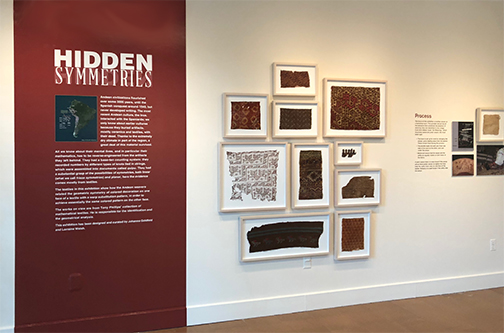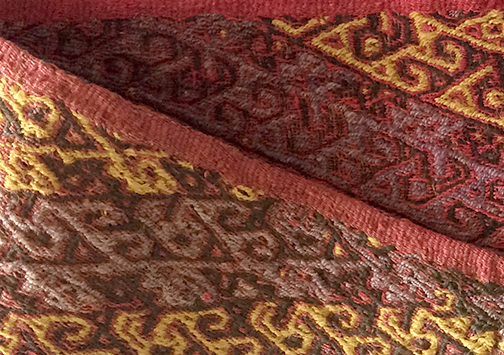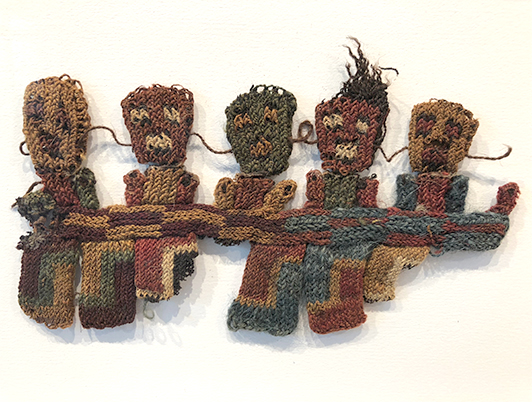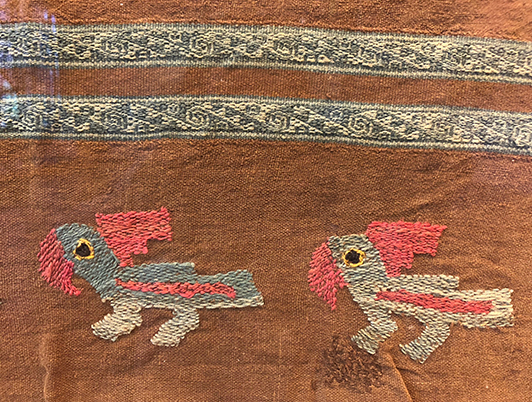The Simons Center Gallery is pleased to announce the opening of HIDDEN SYMMETRIES, an exhibition featuring pre-Columbian art from Tony Phillips’ collection of mathematical textiles.
Simons Center Gallery
June 20 – September 17, 2018
Hidden Symmetries Opening Reception
Math and Art Symposium
Tuesday, July 31, 2018, Simons Center for Geometry and Physics
11:00 am: Introductions by Luis Álvarez-Gaumé, Director of the SCGP.
Film (30 minutes) and Lecture: “‘Labyrinths’ and its Making” by Michele Emmer, Professor of
Mathematics, La Sapienza University of Rome. Conversation with Tony Phillips, Professor of Mathematics, Stony Brook University
2:00 pm Lecture: “The Pre-Hispanic Peruvian Weaving Tradition” by Ann
Pollard Rowe, Research Associate of Indigenous Latin American Textiles, The
Textile Museum, The George Washington University Museum, Washington, DC
3:30 pm: Opening Reception. “Hidden Symmetries” Simons Center Gallery
and Lobby. Tea/coffee.
4:15 pm Lecture: “Hidden Symmetries in Warp-Faced Pre-Hispanic Textiles” by
Tony Phillips, Professor of Mathematics, Stony Brook University
All lectures and films are in the Della Pietra Family Auditorium, SCGP 103.
Exhibition design and curatorial direction by Lorraine Walsh, Art Director and Curator of the SCGP and Visiting Associate Professor of Art, Stony Brook University, and Johanna Goldfeld, Principal of Johanna Goldfeld Design, LLC.
About the pre-Columbian art in “HIDDEN SYMMETRIES”
Andean civilizations flourished over some 3000 years, until the Spanish conquest around 1540, but never developed writing. The most recent Andean civilization, the Inca, interacted with the Spaniards; we only know about earlier cultures because they buried artifacts, mostly ceramics and textiles, with their dead. Thanks to the extremely dry climate in part of the region, a great deal of this material survived.
All we know about their mental lives, and in particular their mathematics, has to be reverse-engineered from the artifacts they left behind. They had a base-ten counting system: they recorded numbers by different types of knots tied in strings, which were assembled into documents called quipu. They had a substantial grasp of the possibilities of symmetries, both linear (what we call frieze symmetries) and planar; here the evidence comes mostly from textiles.
Weavings in this exhibition show how the Andeans could adapt a warp substitution scheme to the geometric symmetries of a colored decoration, in order to achieve essentially the same colored pattern on both faces of a textile.
On view in the gallery are thirty-one textiles, along with two pieces of pottery, dating mostly from the later pre-Columbian civilizations in Peru. These samples give just a hint of the extent and quality of an artistic tradition that produced woven masterpieces unsurpassed in history.





